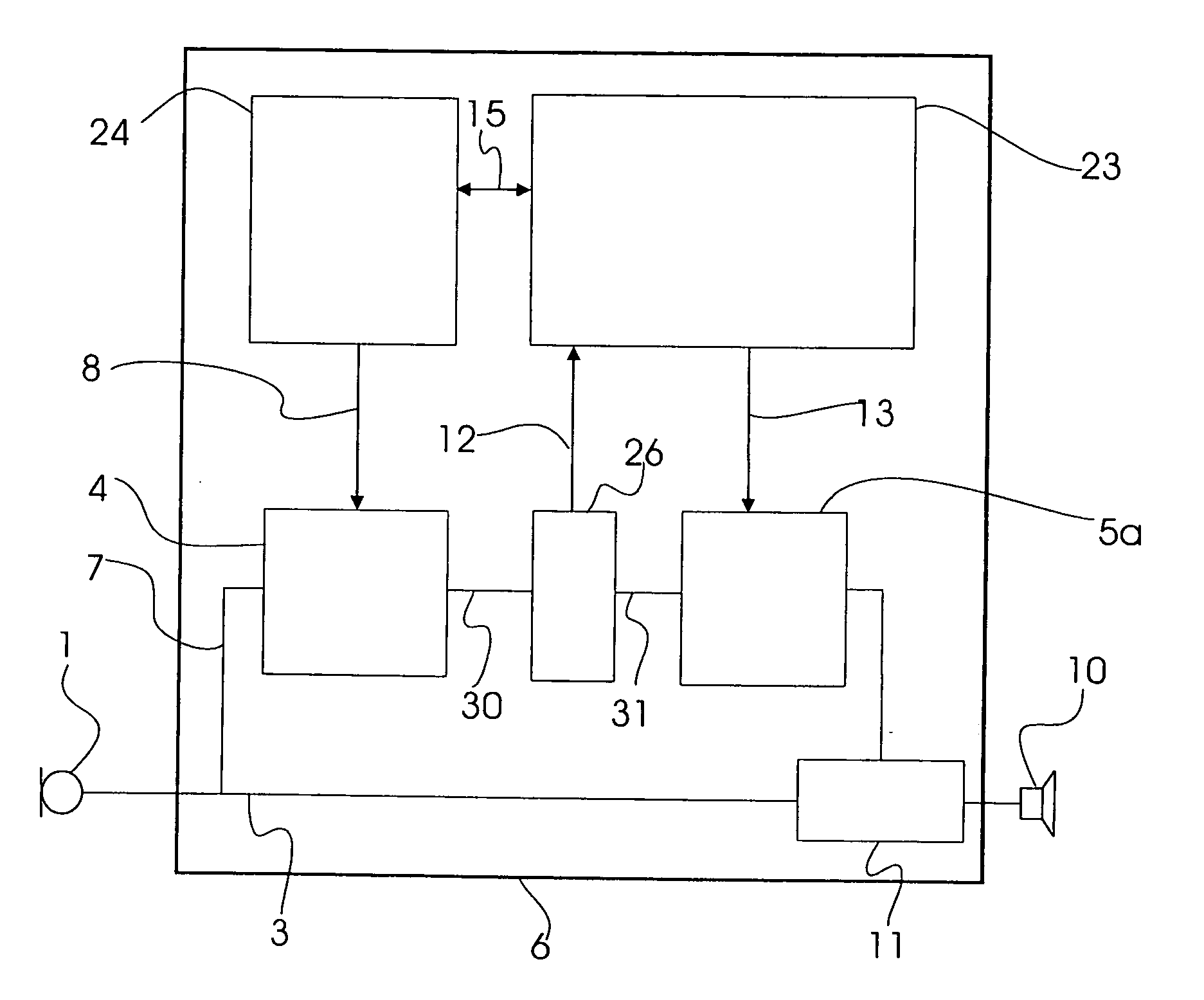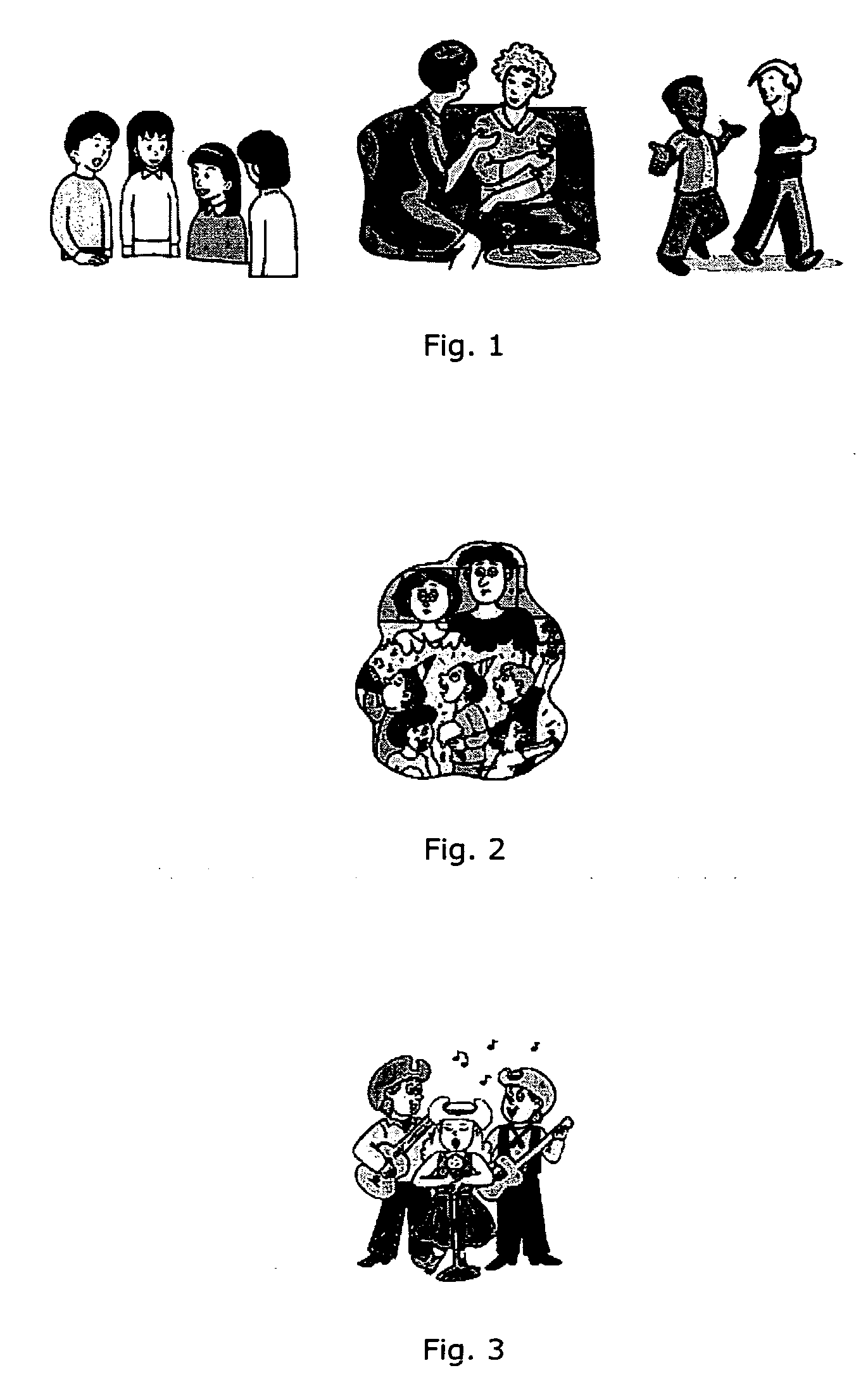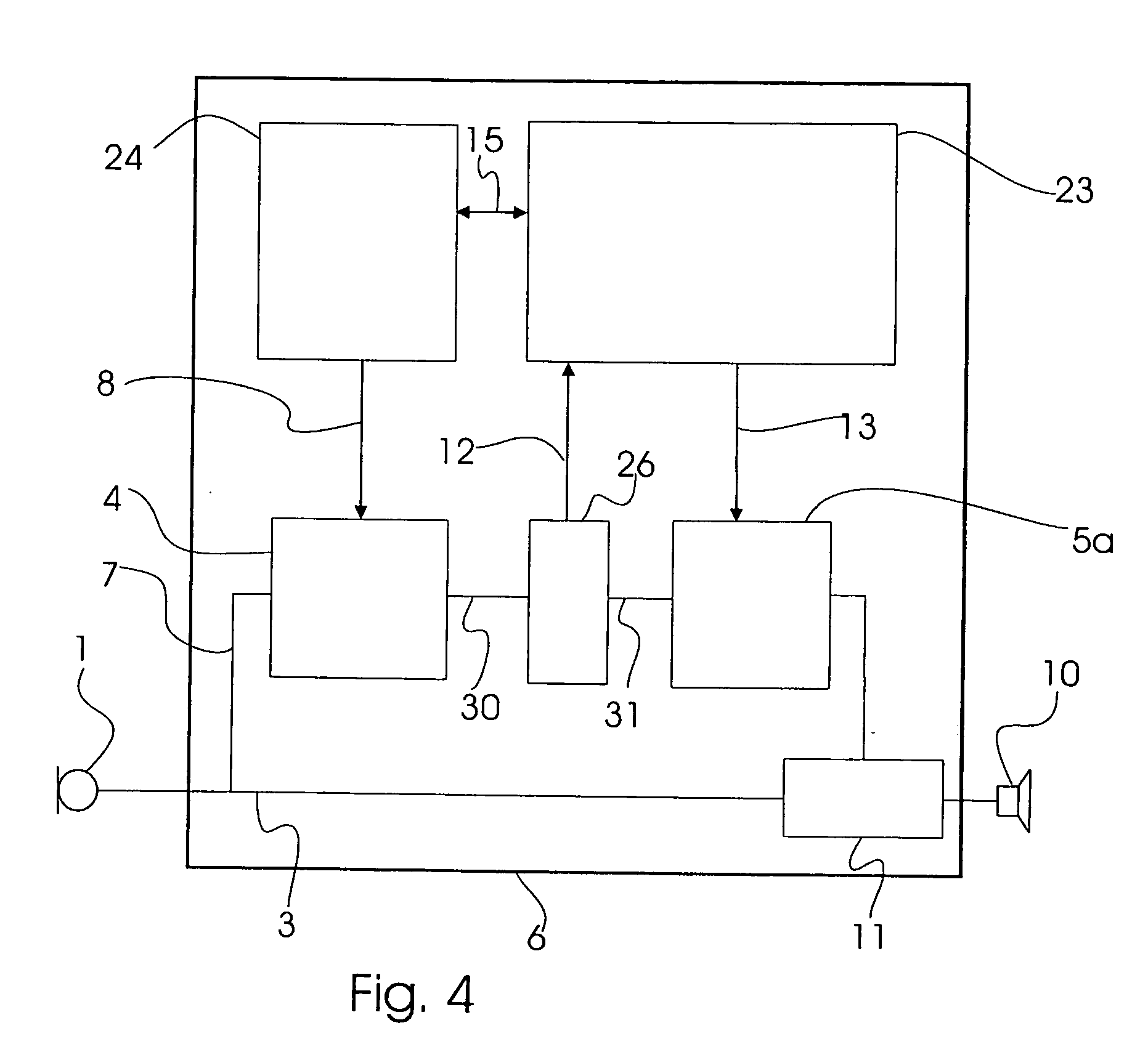Hearing aid with frequency channels
a frequency channel and hearing aid technology, applied in the direction of transmission, gain control, electrical equipment, etc., can solve the problem that signal processing schemes give more distortion than others, and achieve the effect of improving speech understanding
- Summary
- Abstract
- Description
- Claims
- Application Information
AI Technical Summary
Benefits of technology
Problems solved by technology
Method used
Image
Examples
Embodiment Construction
[0031] The following example is based on a hearing aid with 3 programs. Program 1 is adapted to give the best user benefit in quiet surroundings, program 2 is adapted to give the best user benefit when speech in noise is experienced and program 3 is optimized for listening to music. Optimization of the programs includes signal processing features such as frequency gain characteristic; time-constants, dynamic range, noise-reduction, feedback-management, and directionality. In FIG. 1 examples of typical situations where program 1 would be activated, either by the user or automatically: speech in a group or two people talking.
[0032] In situations like the ones displayed in FIG. 1 where the listening task is not overly difficult, the user needs a good sound quality combined with reasonable speech understanding. Thus this program will process the sound through one or two frequency channels. One channel is used when the hearing loss is: a flat mild or moderate to severe hearing loss or n...
PUM
 Login to View More
Login to View More Abstract
Description
Claims
Application Information
 Login to View More
Login to View More - R&D
- Intellectual Property
- Life Sciences
- Materials
- Tech Scout
- Unparalleled Data Quality
- Higher Quality Content
- 60% Fewer Hallucinations
Browse by: Latest US Patents, China's latest patents, Technical Efficacy Thesaurus, Application Domain, Technology Topic, Popular Technical Reports.
© 2025 PatSnap. All rights reserved.Legal|Privacy policy|Modern Slavery Act Transparency Statement|Sitemap|About US| Contact US: help@patsnap.com



